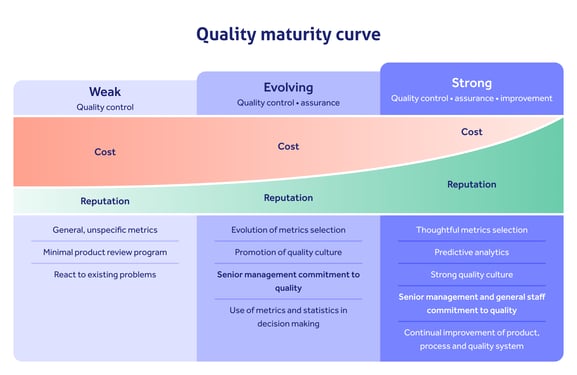5 tips for planning your quality management budget in 2025
As the year winds down, it's time for the dreaded annual task of planning and shaping your FY25 quality management budget.
Budgets have been squeezed. Priorities reassessed. And the typical quality problem - maximizing internal awareness and support - continues.
It's therefore never been more important to get a realistic, well-planned and proactive quality systems budget in place to present in the coming weeks.
Here are 5 top tips to get you up and running.
1. What do you need?
Begin by building your shopping list of quality management system objectives.
This could be hitting a new quality standard, expanding into a new territory, digitizing, or launching a product.
We asked thousands of quality professionals what they had planned at the beginning of the year. To give you an example, they answered like this:
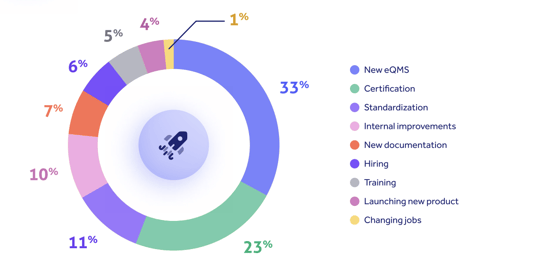
The core of your budget is the underlying plans and objectives of your department.
You need to be clear as a department what those are, so a good exercise at this stage is to perform a fresh internal audit and a root cause analysis of your 10 most re-occurring quality issues. This will reveal the biggest fires you'd like your FY25 budget to fight.
2. Make a golden thread
Now you have your overall quality objectives, aim to build a 'golden thread' connecting them to the broader topline plans of your C-suite.
Juran's concept of the 'Big Q', coined in the 1980s, is as relevant now as it was then. Rather than treating quality as a siloed department, use your budget to reinforce its position as a 'big' business-wide value driver.
For instance, you're much more likely to get an ISO 17025 accreditation project signed off if you can demonstrate how the project will open a new, key territory for business.
And you're far more likely to get extra headcount approved if you can show how that FTE salary will buy the manpower or womanpower needed to perform X and Y.
Build the golden thread.
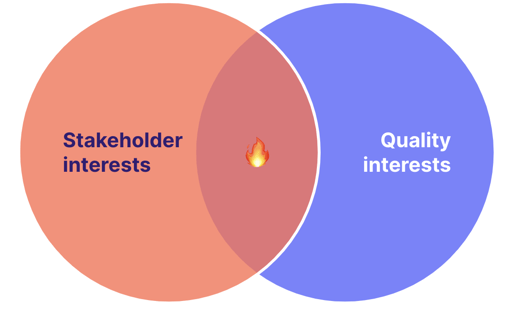
3. Put return on investment at the center
At its core, modern quality is really about calibrating and optimizing your business to save and make money.
You'll be familiar with the 4 types of quality costs:
- Prevention
- Appraisal
- Internal failure
- External failure
But how about the 1-10-100 rule?
The rule holds that $1 properly spent in prevention is equal to $10 spent in appraisal and $100 spent on fixing failures.
Proactive, forward-thinking quality that spends $1 now to save $100 later is an extremely powerful narrative to weave into your budget and maximize the chance of sign-off.
An electronic quality management system or eQMS, for instance, is a critical and increasingly widespread tool for modern quality managers.
An eQMS costs money. Of course it does: they're built, refined and delivered by dedicated vendors with their own margins to maintain.
But by automating and accelerating your processes and preventing costly quality and compliance lapses, the right eQMS investment pays for itself in months - and that's a key point to hammer home as you scope potential systems and add them to your FY25 wishlist.
Don't be afraid to ask for pricing, ROI details and social proof from potential vendors, and discount them if they can't provide them.
Use tools like ROI calculators and case studies to assess the financial impact of any quality tool investment.
Then add your findings to your budget to paint the picture of expected return on investment.
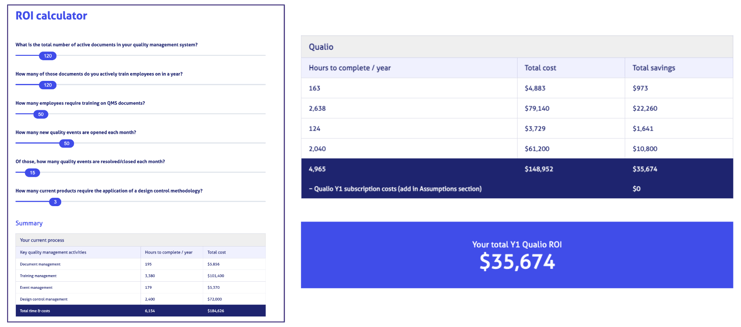
4. Look for cost combinations
You might need an extra FTE in your team in the New Year.
Or you might need to source a dedicated medical device or pharmaceutical expert to boost your internal know-how and guide you through a big project.
On top of that, you might need an eQMS to get off paper, cut your admin time and shore up your compliance.
Are these three items on your FY25 budget - or just one?
That depends. Any sensible quality tool investment, like an eQMS purchase, should have knock-on effects on your wider budget that need calling out.
Not only can digitizing quality mitigate any extra headcount costs by boosting efficiency, eQMS support and content services like those provided by Qualio can also remove the need for extra consultancy costs by providing expert guidance and pre-built quality system documentation at a stroke.
Depending on the context, three must-have items on your budget can therefore be reduced to just one. Same benefits, dramatically lowered costs.
Make this clear as you pitch your budget!
A line item which also delivers the business impact of two other, now unnecessary, line items is much more likely to get the nod from your senior management team.
Learn the 12 questions you should ask before you buy an eQMS
5. Be proactive
Quality initiatives like the FDA's Case for Quality and Quality Management Maturity program have a common thread at the center: going beyond bare-minimum compliance and embracing continuously improving quality best practice.
Your FY25 budget is the perfect opportunity to bake this energy into your company's operational plans.
Don't confuse compliance with quality:
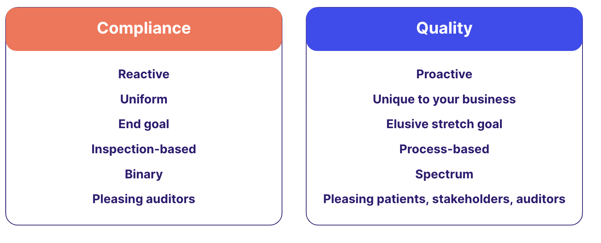
And remember the less you spend on quality, the more you'll need to spend on time-consuming compliance upkeep and maintenance.
But on the other hand, investing in key quality programs like training your staff, modernizing your toolset and sharpening your manufacturing processes will ease your compliance burden and make natural, long-term compliance an automatic and painless part of how your business functions.
Don't just tread water with next year's budget. Push for at least a couple of those big-ticket quality- and improvement-based items that will help cut cost and frustration in the long run.
Take your senior leadership team on this journey with you. If you're just pitching numbers, you're doing it wrong!
Your FY25 budget should be something to be excited about: the first step to doing things better than you do them now.
Good luck!
